If you’re looking for a dog breed that suits your personal preferences, then look no further than the Bully breed. Let’s dive into more details about this fascinating breed in the following article.
1. Unveiling the Bully Breed
Origin of the Bully Breed
The Bully dog, officially known as the American Bully, originated in the United States back in 1995. Since then, the Bully breed has made its way to neighboring countries and even some Asian nations like Vietnam.
The Bully is a result of crossbreeding between the American Bulldog and English Bulldog purebreds. Despite their large and intimidating appearance, Bullies are inherently gentle and affectionate towards their owners.
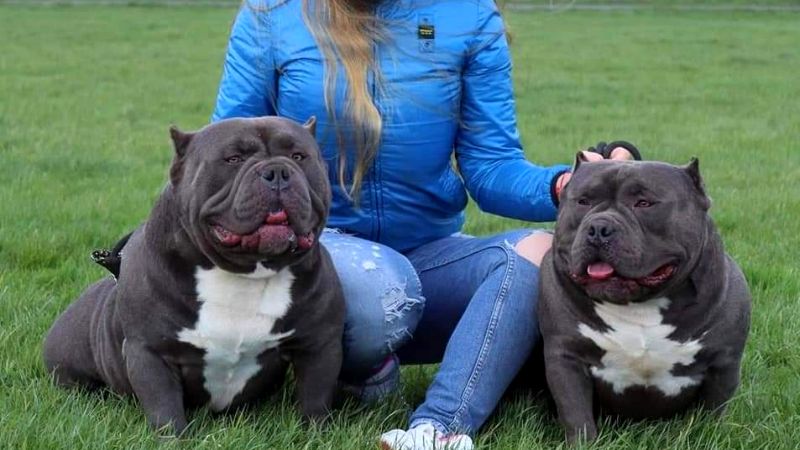 Origin of Bully Dogs
Origin of Bully Dogs
Classification of Bully Dogs
Based on average adult size, genetics, and gender, Bully dogs can be categorized into five types:
- Bully Pocket: Males range from 14 to 17 inches, while females are between 13 and 16 inches. Bully Pockets appear slightly smaller than other Bully types, but they’re not tiny by any means.
- Bully Standard: Males can reach up to 20 inches, and females up to 19 inches in height. The Bully Standard boasts a well-proportioned physique with a square-shaped head and a sturdy build. This breed is particularly popular due to its robust bone structure and muscular appearance.
- Bully Classic: While similar in size to the Bully Standard, the Classic variety is slightly lighter and more slender. They have a less bulky build, often featuring a square head and muzzle alongside a lighter frame.
- Bully Extreme: The Bully Extreme boasts more muscle mass and weight compared to the Bully Standard. While they share the same temperament and characteristics, the Extreme variety stands out with a more robust build and higher bone index.
- Bully XL: Males can reach up to 23 inches, while females measure up to 22 inches. This is the largest variation within the Bully breed, showcasing superior height, weight, and bone index compared to their smaller cousins.
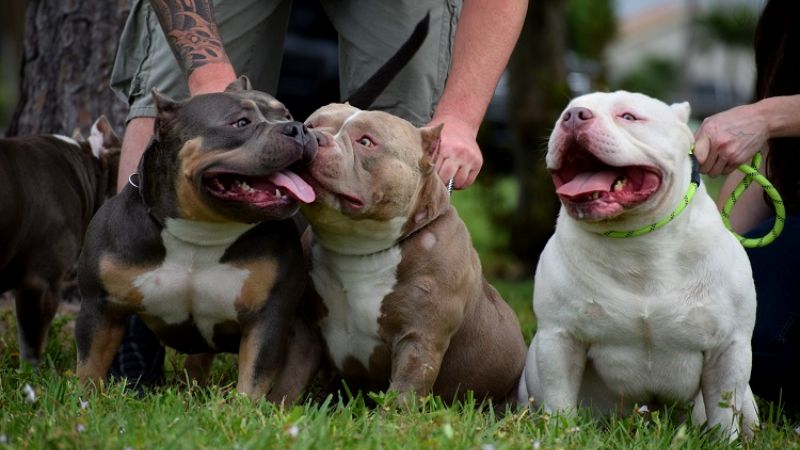 Classification of Bully Dogs
Classification of Bully Dogs
Common Bully Coat Colors
Bully dogs typically sport a short and coarse coat. Their coats often come in solid, neutral colors like gray, black, or light yellow. Occasionally, they may also display spotted patterns or, in rare cases, feature three distinct colors.
Physical Characteristics of Bully Dogs
Bully dogs are characterized by their square-shaped heads of moderate length, showcasing a broad forehead. Their ears are typically erect, neither too floppy nor overly long. Their eyes are set wide apart, and their muzzles are slightly blunt with a slight droop to their jowls. Despite this, their biting power is comparable to that of the Pitbull breed.
One distinctive feature of Bully dogs is their robust and sturdy bodies. They have well-developed rib cages, strong chests, and broad shoulders. Their backs are well-proportioned, neither too long nor too short. However, due to their bulky shoulders, their backs slope downwards from the shoulders.
Bully dogs have large, powerful legs with well-defined muscles. These muscular legs enable them to run with speed and agility while also providing a strong grip.
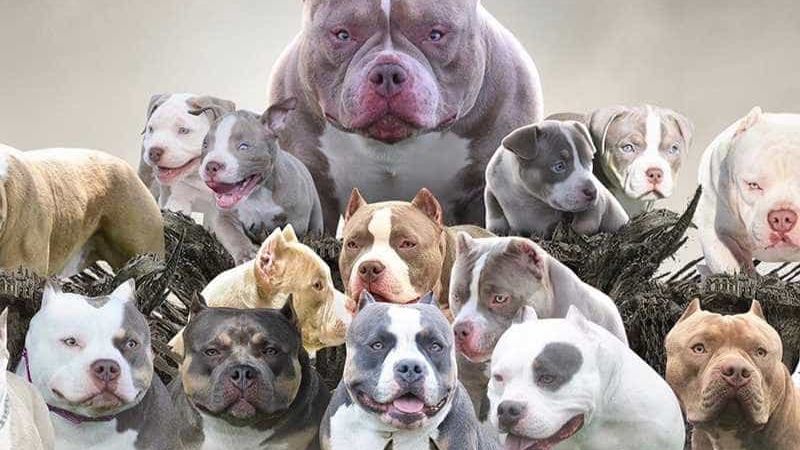 Physical Characteristics of Bully Dogs
Physical Characteristics of Bully Dogs
Personality Traits
Despite their resemblance to the intimidating Pitbull breed, Bully dogs are surprisingly gentle and approachable. They will not randomly attack other dogs unless provoked or commanded by their owners.
Bully dogs are highly obedient and exceptionally friendly towards children. You can rest assured that they will quickly win over the hearts of young ones in your family.
Like most dog breeds, Bullies are loyal companions. They exhibit a calm temperament and can easily adapt to various living conditions. Bully dogs are trustworthy guardians who, from the age of seven months onwards, will only follow their owner’s commands. They also display courage when it comes to protecting their owners.
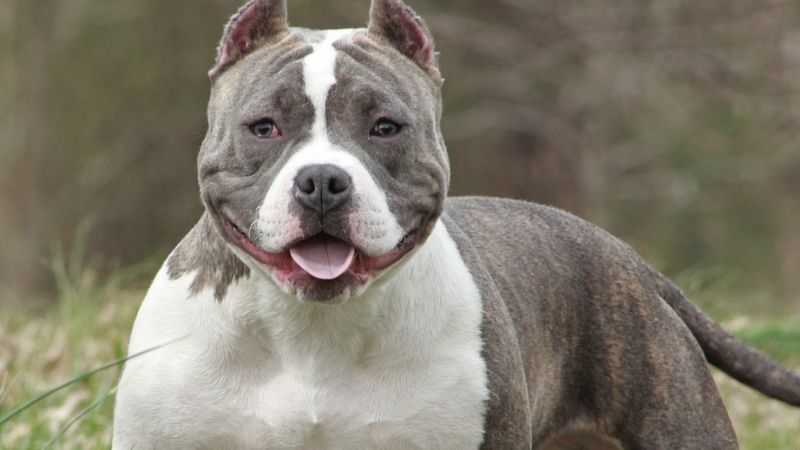 Personality Traits
Personality Traits
Reasons to Consider Adopting a Bully Dog
With their robust and muscular build, Bully dogs are ideal for those who embrace a bold and unique personality. Additionally, Bully dogs are incredibly loyal and obedient, making them a trustworthy companion.
2. Caring for Your Bully Dog
Nutritional Requirements of Bully Dogs
To maintain the robust and healthy physique of your Bully dog, it’s essential to provide them with a diet rich in protein. Meat should be the primary component of their meals, complemented by other foods such as egg whites, liver, necks, milk, and cheese. To enhance muscle growth, you can also incorporate dietary supplements.
 Nutritional Requirements of Bully Dogs
Nutritional Requirements of Bully Dogs
Nutritional Guidelines for Bully Dogs at Different Life Stages
Under 3 Months Old
After weaning off their mother’s milk, Bully puppies require a suitable diet. Since their digestive system is still developing, their food should primarily consist of minced or pureed meat mixed with soft, cooked grains.
It’s recommended to divide their daily food intake into 4 to 5 smaller meals, totaling approximately 600 to 700 grams. Maintain a gap of 4 to 5 hours between meals to prevent overfeeding and potential vomiting.
 Under 3 Months Old
Under 3 Months Old
3 to 6 Months Old
During this phase, Bully puppies have almost fully developed, so a slight adjustment to their diet is necessary. There’s no longer a need to mince their food, as they can now chew and develop stronger jaws. Reduce their meal frequency to three times a day.
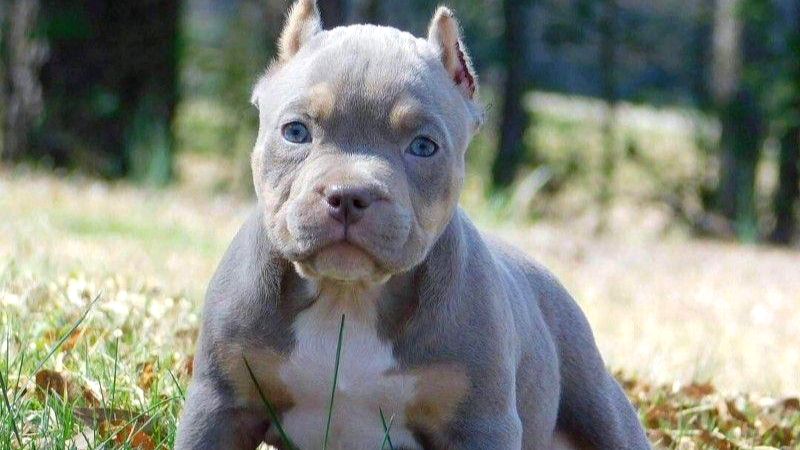 3 to 6 Months Old
3 to 6 Months Old
Over 6 Months Old
As your Bully dog continues to grow and develop a more muscular build, their food intake should increase accordingly. Introduce more calcium to their diet and provide them with bones like chicken or duck necks to strengthen their jaws. You can offer them a hearty breakfast and dinner, ensuring that each meal contains the same amount of food as two regular meals, thus providing sufficient nutrition.
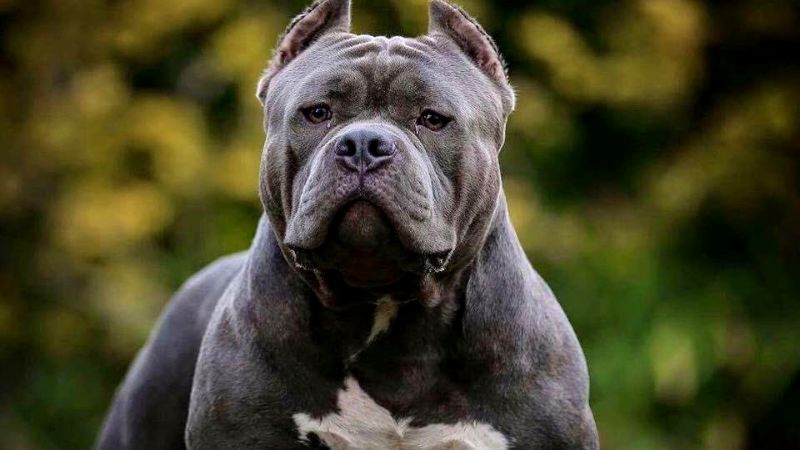 Over 6 Months Old
Over 6 Months Old
Grooming and Hygiene for Bully Dogs
Similar to other dog breeds, Bully dogs require a comfortable space to eat and sleep, along with some toys to keep them entertained. It’s recommended to bathe them two to three times a week and schedule regular check-ups with a veterinarian for overall health monitoring.
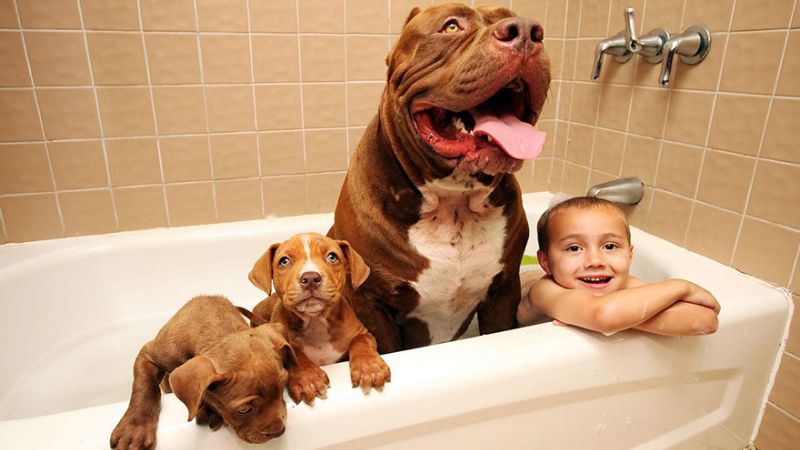 Grooming and Hygiene for Bully Dogs
Grooming and Hygiene for Bully Dogs
Common Health Issues in Bully Dogs
Bully dogs are prone to allergies due to an overactive immune system. They may also experience hip or elbow dysplasia. You can help prevent this condition by including supplements like glucosamine or fatty acids in their diet.
Bully dogs are also susceptible to respiratory issues due to their short muzzles. In some cases, they may inherit a neurological disorder that affects their daily activities.
 Common Health Issues in Bully Dogs
Common Health Issues in Bully Dogs
Important Considerations When Caring for Bully Dogs
For Bully puppies under three months old, ensure they receive clean and hygienic food. Avoid giving them bones during this stage, as they may accidentally swallow them. It’s also crucial to get them vaccinated against worms and other diseases to maintain their overall health.
When grooming your Bully dog, opt for shampoos specifically designed for them, and gently massage their bodies, especially areas prone to bacterial buildup, such as between their paw pads.
Bully dogs are not fond of water due to their weak respiratory system, and they can easily get waterlogged. If you wish to teach them how to swim, opt for shallow waters, and always keep a close eye on them.
 Important Considerations When Caring for Bully Dogs
Important Considerations When Caring for Bully Dogs
3. Purchasing a Bully Dog
Price Range of Bully Dogs
The price of Bully dogs can vary significantly, ranging from a few million to tens of millions of VND, depending on the breed and size. Bully puppies in Vietnam typically lack proper documentation and cost between 7 and 9 million VND. Well-documented Bully dogs imported from Thailand can cost around 15 million VND, while those from the US range from 20 to 25 million VND.
Adult Bully dogs imported from Thailand or the US can fetch prices ranging from 30 to 50 million VND.
 Price Range of Bully Dogs
Price Range of Bully Dogs
Factors to Consider When Buying a Bully Dog
To ensure you acquire a healthy and high-quality Bully dog, keep the following considerations in mind:
- Opt for Bully dogs with small, compact ears that stand erect and point upwards. Test their auditory response by clapping your hands in front of them—a quick reaction indicates healthy hearing.
- Assess their eye health by moving an object in front of them. Healthy eyes will follow the object’s movement.
- Choose Bully dogs with agile and graceful gaits, boasting thick, shiny, and well-defined coats.
- Pay attention to other health indicators, such as skin conditions, eye discharge, or anal discharge. Allocate around 20 minutes to thoroughly examine the dog before making your decision.
In conclusion, we hope that this article has provided you with valuable insights into the Bully dog breed. Remember to consider your personal preferences when selecting your furry companion!

































